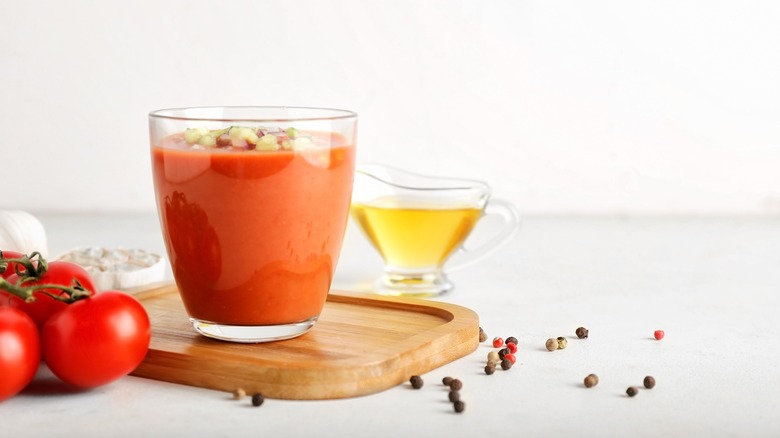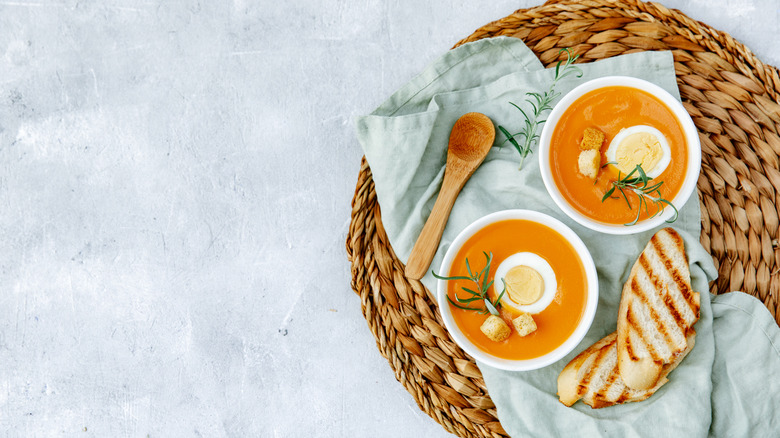The Real Difference Between Spanish Salmorejo And Gazpacho
Spain is full of wonders, in every corner of it. Every region, city, and neighborhood has its culinary specialty, the reason some people say Spain is explored through the table. Tapas, paella, cocido, and tarta de queso, are just some examples of the delicious food Spain has to offer. And of course, this may all be joined by a glass of wine or a caña (a small glass of beer, per Culture Trip).
You may think you know or have tried it all, but one day you might encounter a glass or bowl of cold red soup, perhaps tomato, with some toppings on top. Gazpacho? Maybe yes, or maybe not. Ask the chef about the ingredients or check the texture, because it could be another trendy chilled soup known as salmorejo.
Gazpacho and salmorejo are both cold soups with tomatoes as their main ingredients, making both a perfect summer meal or dinner for hot days. Gazpacho is a famous Andalucian dish, and salmorejo also comes from the South, especially Córdoba (via City Life Madrid). But, beyond its different origins, each soup has its own list of ingredients and unique flavors.
Salmorejo is thicker than gazpacho because it contains bread
As City Life Madrid explains, gazpacho is a cold soup made from raw veggies like tomatoes (almost always the main ingredient), plus cucumbers, onions, green and red peppers, garlic, sherry vinegar, and olive oil. Usually, this all goes in a blender, with extra olive oil for added creaminess. Then, the light mixture is refrigerated for some time before its ready to serve. Salmorejo is also made in a blender, but the ingredients are just tomatoes, garlic, olive oil, and bread, so the final result is thicker. It is also refrigerated before being served with diced hard-boiled eggs and serrano ham.
Although different, at their core, gazpacho and salmorejo are famous Spanish dishes, both eaten cold, served as a first course or a tapa, and they both need fresh, ripe, and flavorful tomatoes. Because of this, they share similar health benefits: Tomatoes are a great hydrating food (via Today) and an important source of vitamin C and potassium, as Healthline reports. Both are healthy, delicious, and filling, like many other Spanish recipes!

